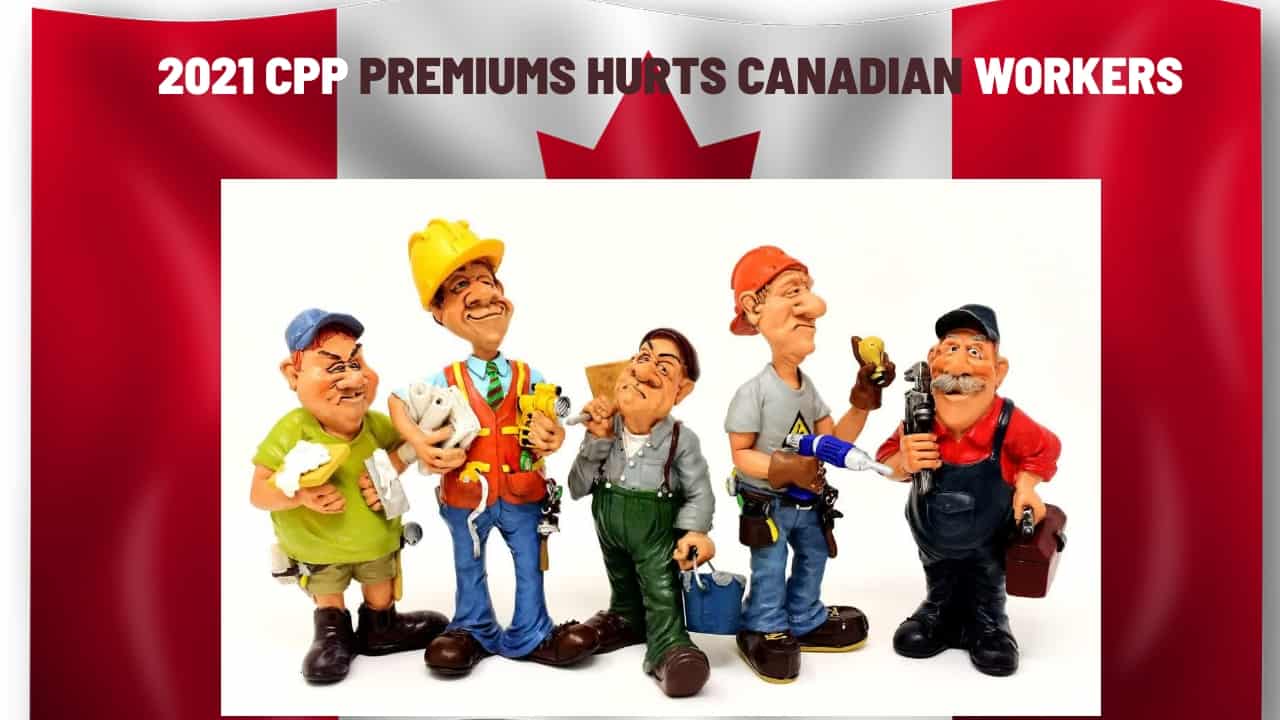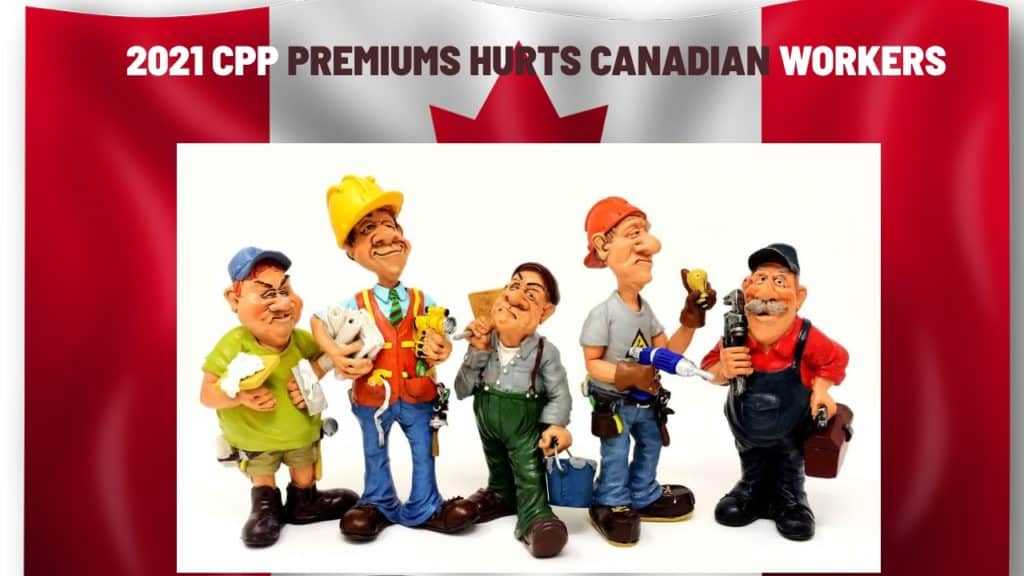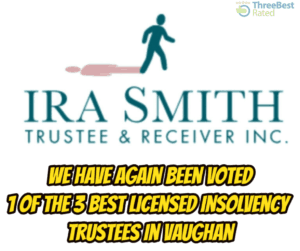
We hope that you and your family are safe, healthy and secure during this coronavirus pandemic.
Ira Smith Trustee & Receiver Inc. is absolutely operational and Ira, in addition to Brandon Smith, is readily available for a telephone consultation or video meeting.
If you would prefer to listen to the audio version of this small businesses in Canada Brandon Blog, please scroll to the bottom and click play on the podcast.
Small businesses in Canada introduction
Did you know that since the start of the COVID-19 outbreak 1 year ago that small businesses in Canada racked up $135 billion worth of debt to stay afloat? Seven in 10 small businesses in Canada have actually borrowed money because of COVID-19. The average is almost $170,000 per business, according to a new survey released by the Canadian Federation of Independent Business (CFIB). In total, small businesses in Canada currently owe a cumulative $135 billion.
Out of these businesses that have increased their debt, 76% say it will take them over a year to pay it off. Eleven percent of respondents worry that they might not have the ability to repay their COVID-19 associated financial obligations ever! As far as returning to normal profitability (before the additional COVID-19 debt repayment), 40% are hoping to see it in 1 year’s time, but they really worry that it will take longer.
The purpose of this small businesses in Canada Brandon Blog is to discuss how important small business really is to the Canadian economy and what options exist for businesses and companies facing insurmountable debt challenges. Sometimes I will refer to small businesses in Canada as SMEs.
Contribution of SMEs to Canadian business
The best way to describe the contribution of SMEs to the Canadian economy is by looking at the most recent facts about small businesses in Canada reported by Statistics Canada.
How many businesses in Canada are small businesses?
The widely held definition of a small business corporation is a company that employs no more than 500 people and that has a total asset value of less than $15 million. Most of us have heard that a “small business” is one that employs fewer than 50 people — and that a “big business” has more than 500 employees. But what about businesses that fall in the middle? They are not quite small, but they’re not quite big either; they all fall into the category of SMEs.
In Canada, 91 percent of businesses fall into this in-between category, and there are roughly 3.5 million businesses in total. That’s a lot of businesses to keep up with.
What is the contribution of SMEs to exports in Canada?
Small businesses in Canada are not just small versions of large companies. They are different beasts altogether, and their individual contributions to the Canadian economy are just as important as those of their larger counterparts. In fact, SMEs contribute almost 50% of the country’s exports, and if they were taken out of the picture, exports would fall by almost 40%.
In 2018, exports of items were valued at $522.8 billion, of which 41.1 percent was attributable to SMEs. More than 50,000 Canadian companies exported goods, the huge majority of which were SMEs (97.4 percent).
How many people were employed in Canada in 2019?
In 2019, roughly 16.1 million people were employed in Canada. Private sector businesses employed 76.2% of the total number. The public sector employed the balance of 23.8%.
The definition of small businesses in Canada ranked by firm size using the number of employees are:
- Small companies (1 – 99 workers)
- Medium-sized businesses (100 − 499 workers)
- SMEs (1 − 499 employees)
- Large companies (500+ workers).
What is the distribution of employment across the private sector?
The variety of people employed defined by the business size of the employer varies significantly between the private and public sectors. In 2019, 88.5% of employed individuals in the economic sector worked for small businesses in Canada, compared with 76.2 percent of those used by public companies of the same dimension.
For the five-year period 2014-2019, Canadian employment ranks had a net gain of 1,076,100. Just over 70% of this increase is attributed to the private sector employment and less than 30% to the public sector.
How many businesses appear and disappear each year?
From these statistics, we see that the contribution of SMEs to economic growth is huge. These small and medium-sized businesses make up the majority of businesses in Canada. These key small business statistics show just how important these Canadian businesses are to the survival of the Canadian economy.
An increase or decrease in the number of businesses is the net result of the appearance or disappearance of businesses over a given period. This is often referred to as “creative destruction.” Between 2001 and 2016, the business birth rate was greater than those that died, except for two: in 2013 and in 2016, when more businesses disappeared (97,151 and 95,889) than were created (95,326 and 95,176),
There are more business births each year than those that disappear, other than for 2 years; 2013 and 2016. According to a Business Development Canada report from the Business Development Bank of Canada, there are more than a quarter of a million businesses in the country at any one time each year. More than 40,000 disappear.
The report was based on data from Statistics Canada’s Business Demography Statistics, which tracks businesses based on the number of active and inactive corporations, and Entrepreneurship in Canada, which tracks self-employed and “indeterminate” businesses. The Statistics Canada information is that business formation is on the rise, and the rate of business deaths has decreased.
This variation between the average birth rate for these two sectors can be explained by the entry cost and different levels of competition. If this is, indeed, the case, higher birth rates would be observed in sectors with a lower entry cost or with a higher level of competition than other sectors.
So more small businesses in Canada appear than disappear every year according to these findings. These statistics of course were from time periods all before the coronavirus pandemic.

What proportion of new businesses survive the first 15 years?
Every year, an average of 128,000 new businesses are started in Canada. According to the CFIB, about 10% of these new businesses close their doors within the first year. By year 10, that number has risen to 25%. Those are pretty alarming statistics, no matter how you look at them.
What this means is that most new businesses are doomed to fail in their first year, and many of the rest will only survive a few years beyond that. Here are some more alarming statistics on the percent of SMEs enterprise survival rate:
- there is a 45.8% chance that a business will survive for one year;
- a 32.3% chance that it will survive for two years;
- an 18.3% chance that it will survive for three years; and
- a 9.5% chance that it will survive for five years.
How many small businesses in Canada could close permanently amid a pandemic
The number of small businesses in Canada that survive for ten years (and beyond) is quite low, so it is important to recognize those that are able to make it. So two essential business owner characteristics have to be eternal optimism and being a solid business planner when starting a new business because of the high failure rate.
Now take those long odds for a business survival rate and layer a global pandemic on top of that. The COVID-19 pandemic is nerve-wracking enough to the general public, but for many small business owners, it is downright terrifying. According to the CFIB, close to half of the country’s small businesses could close permanently. The CFIB‘s findings were based on responses from 1,800 small business owners. The CFIB called for the government to provide small business owners with the tools they need to protect themselves and keep their businesses afloat.
The Public Health Agency of Canada reported an even scarier estimate. It felt that up to 70% of small businesses in Canada could close permanently amid a pandemic. The reason? Employees and customers won’t show up. The industry sectors that will be affected the most are the ones whose employees and customers are the most mobile and those whose employees have to work in crowds, like cabs, the hospitality industry, food and beverage, and theatres.
From what we have seen so far, they are correct.
The need for government assistance for Canadian business
Given this result, the Canadian federal government is investing heavily in maintaining and creating jobs to help the struggling Canadian economy. One of its investment vehicles is Canada’s COVID-19 Economic Response Plan which I have previously written about. This program is aimed at supporting business sectors that create jobs here.
This financial help program is designed to assist businesses that are having difficulties because of the pandemic-caused state of the economy. It is intended to support businesses that create jobs. Although many of the support programs have now ended, the Economic Response Plan still has the following programs:
- Canada Emergency Wage Subsidy (CEWS); and the
- Canada Emergency Business Account (CEBA) interest-free loan
Saving small businesses in Canada
So before COVID-19 arrived here, the odds were always against Canadian start-up businesses having a healthy long-term survival rate. With the pandemic, credible Canadian organizations estimate that we could lose 50% (CFIB) to 70% (Public Health Agency of Canada) of small businesses in Canada.
The life support program federal and provincial governments have instituted help. Multiple lockdowns obviously do not. What is really needed is some sort of return to normal operations so that business revenue can return. Then hopefully over time, profitability will follow. But that is really outside of all of our control.
However, as a licensed insolvency trustee (Trustee), there are things we are currently doing for businesses that cannot see any short-term prospects for being able to overcome their debt problems on their own. The kinds of businesses that we are seeing fall into two categories; viable and non-viable.
The first thing I do as a Trustee is to get a good understanding from the business owner as to the history of the business and the reasons why the business owner believes the company has gotten itself into financial trouble. I also want to get a snapshot of what the assets and liabilities of the business are and I try to form an assessment as to whether the business is viable or not. Even if viable, does the entrepreneur have the energy, mindset and desire to manage a business turnaround. Finally, I need to understand the cash flow requirements of the business and is there a source of funding.
I then analyze all this information and form an opinion as to what the realistic options are for the company and its business. Depending on each situation, the range of options are:
- The business operations and debt levels are such that they are not serious enough and the company, over time, should be able to work itself out of a short-term cash crunch through some imaginative management of the company. Perhaps even an informal restructuring of sorts.
- The business is viable but needs to do a formal restructuring in order to keep the good parts of the business so that it can become profitable again and continue to provide jobs to Canadians. The process would be either a Division I Proposal under the Bankruptcy and Insolvency Act (Canada) (BIA) or a Plan of Arrangement under the Companies’ Creditors Arrangement Act (Canada) (CCAA).
- If a formal restructuring is not possible, perhaps a sale of the business assets is required and the buyer will operate the assets as an operating business. In this case, a secured creditor will enforce its security in a receivership, through either a private appointment or a court appointment.
- Finally, maybe corporate bankruptcy is required either in concert with the secured creditor enforcement or by itself if there are no secured creditors. This would allow for the necessary protection to give the time to liquidate the assets, either as a going concern sale or a pure liquidation. The funds obtained from the sale would then be paid to the creditors, in priority of their claims.
Entrepreneurs are obviously scared of any formal insolvency proceeding
The idea of a formal insolvency proceeding makes an entrepreneur feel like a failure. I know they can feel discouraged, but the business isn’t in trouble because senior management did something wrong. You didn’t fail. Business conditions changed. Especially under today’s pandemic circumstances.
Now you’re ready to move forward with your business, but you need some help. That’s what the BIA and CCAA are designed to do; to help your business make a new start. Insolvency proceedings are there to provide a safety net for people and companies. It’s a tool that responsible people use to save a good business after a setback.
Don’t worry what your customers might think about you if your business goes through a formal insolvency proceeding. You won’t be the first and you won’t be the last.
Small businesses in Canada summary
I hope that you found the question posed in this small businesses in Canada Brandon Blog. If you are concerned because you or your business are dealing with substantial debt challenges and you assume bankruptcy is your only option, call me. It is not your fault that you remain in this way. You have actually been only shown the old ways to try to deal with financial issues. These old ways do not work anymore.
The Ira Smith Team utilizes new modern-day ways to get you out of your debt difficulties while avoiding bankruptcy. We can get you the relief you need and so deserve.
The tension put upon you is big. We know your discomfort factors. We will check out your entire situation and design a new approach that is as unique as you and your problems; financial and emotional. We will take the weight off of your shoulders and blow away the dark cloud hanging over you. We will design a debt settlement strategy for you. We know that we can help you now.
We understand that people and businesses facing financial issues need a realistic lifeline. There is no “one solution fits all” method with theIra Smith Team. Not everyone has to file bankruptcy in Canada. The majority of our clients never do. We help many people and companies stay clear of bankruptcy.
That is why we can establish a new restructuring procedure for paying down debt that will be built just for you. It will be as one-of-a-kind as the economic issues and discomfort you are encountering. If any one of these seems familiar to you and you are serious about getting the solution you need, contact the Ira Smith Trustee & Receiver Inc. group today.
Call us now for a no-cost consultation.
We will get you or your business back up driving to healthy and balanced trouble-free operations and get rid of the discomfort factors in your life, Starting Over, Starting Now.
We hope that you and your family are safe, healthy and secure during this coronavirus pandemic.
Ira Smith Trustee & Receiver Inc. is absolutely operational and Ira, in addition to Brandon Smith, is readily available for a telephone consultation or video meeting.



 Full disclosure:
Full disclosure: 